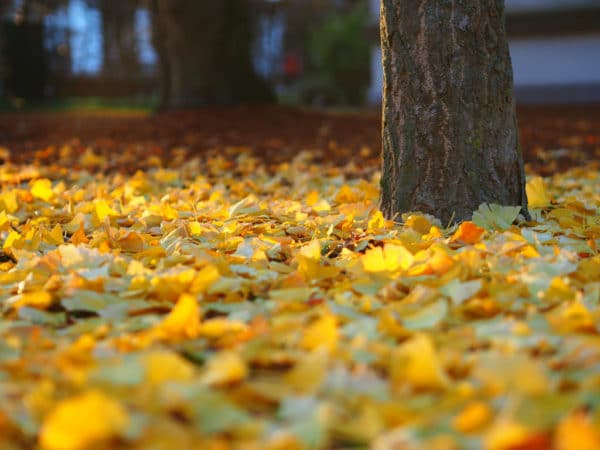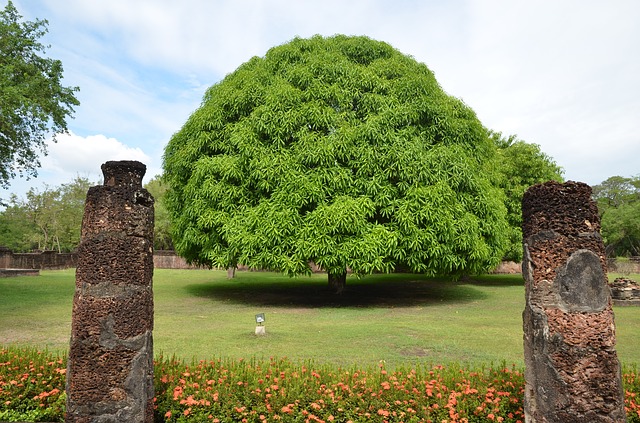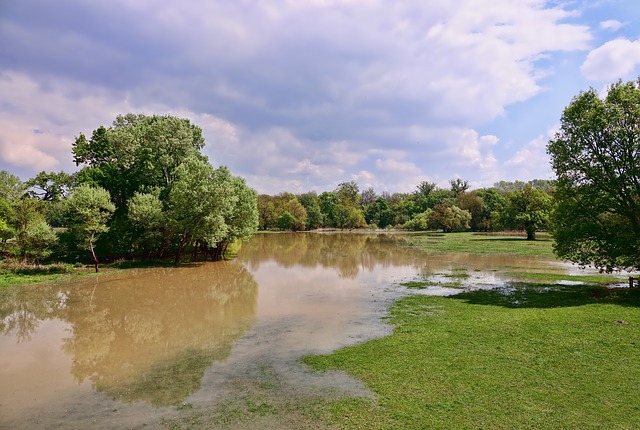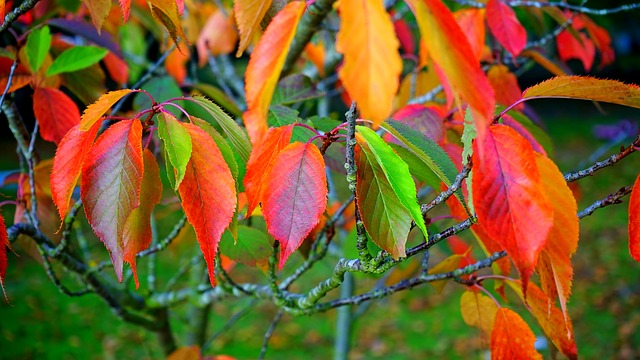7 Reasons Why Your Fruit Trees are Losing Leaves

You know that moment when you’re fruit trees have looked great for a while, then unexpectedly the leaves start dropping? If you’re like me, seeing this can stop you in your tracks and get the gears cranking in your head. You start running through all the various scenarios of how you’ve been caring for your tree or worse, neglecting it, and what you need to do to start fixing it.
Should I be worried when my fruit trees start losing leaves? When fruit trees start dropping leaves it definitely can be a cause for concern, but not always. Sometimes shedding leaves is just a part of the trees natural growth cycle, for example winter dormancy. When a fruit tree is losing leaves due to a watering issue or nutrient deficiency, that is cause for concern. Let’s take a look at how we can further determine what is going on when our fruit trees lose leaves.
What is the difference between a Deciduous or Evergreen Fruit Tree?

Hopefully the terms Deciduous and Evergreen ring a bell from our elementary school days, but if not, we will review it briefly here.
Deciduous
A deciduous fruit tree is a tree that sheds its leaves and goes fully dormant in the winter. The leaves will start changing color to yellow, orange, red, or brown before dying off. It’s commonly known as “fall colors” in areas that have forests of deciduous trees. All leaves will be gone from the tree throughout the winter and will begin to regrow in spring when the temperatures start to rise.
The tree is resting during this time and energy is stored for its spring growth and fruit production. This is why these types of fruit trees are commonly shipped in the winter as bare root fruit trees, because they aren’t actively growing. Some common types of deciduous fruit trees are Peaches, Plums, Apples, Apricots, Cherries, Pomegranates, Jujubes, Pears, and Mulberries.
Semi-Deciduous
Some fruit trees are considered semi-deciduous, meaning its common for these trees to shed leaves, but they won’t have a long period of being leafless like a fully deciduous tree. They may slowly shed leaves throughout the winter and finish losing the old leaves just as the new spring leaves are emerging. Some tropical fruit trees are considered semi-deciduous fruit trees. Atemoya, Cherimoya, and Sugar Apple are some tropical fruit trees that are semi-deciduous.
Evergreen
You’re probably able to guess by now, but evergreen fruit trees keep their leaves year round. Many tropical fruit trees are going to be evergreen, since they originate in climates that generally stay warm year round. Some examples of evergreen fruit trees would be citrus, mangoes, and sapodilla.
Am I Overwatering or Underwatering my Fruit Tree?

This is the million dollar question when it comes to problems with fruit trees. One of the biggest challenges is that symptoms of overwatering and underwatering tend to be similar. It’s important to get in the habit of checking your soil. You’ll physically need to check the soil with your finger at a depth of a few inches. If it is dry to the touch or doesn’t clump when squeezing some of the soil in your hand, that’s a good indication that it needs water.
Think about your watering schedule, I tend to increase my watering as the temps increase. If it’s hot and you’re only watering once every few weeks, it’s probably not overwatering. Some recommend using a screwdriver or probe to check the soil. If the probe goes easily into the soil, it shouldn’t need water. Remember to clean your probe with rubbing alcohol as you would pruning shears, to prevent spreading diseases.
Overwatering Symptoms
In relation to leaf drop, in fruit trees that are being overwatered the leaves will start turning yellow and dropping. Both newer and older leaves can drop with overwatering. Overwatered trees can almost have an appearance of being underwater. Leaves will feel limp versus on the dry side for underwatering. The leaves can become brown. When fruit trees are being overwatered growth will appear to be stunted. If you suspect overwatering, pull all mulch back and stop watering. Don’t water again until the soil has fully dried. Gypsum can help to slowly breakdown poorly draining soils. Try SoilLogic’s Liquid “Gypsum”.
Underwatering Symptoms
When trees aren’t receiving enough water, leaf drop is common, but typically starts from the older leaves first. Leaves will generally turn yellow and drop. Fruit trees that are underwatered have leaves that tend to droop, then start becoming dry. It’s more common to find scorching on leaves. Leaf curling is common, looking like a taco shell, especially with citrus, is an indicator that water is needed.
Other Possible Causes of Leaf Drop

Watering is usually the first thing to blame, but sometimes watering isn’t the culprit. There are several other factors to consider when you discover that you’re properly watering your fruit tree. Take a look at some of these other factors that may be contributing to leaf drop.
Climate changes
In the desert climate that I reside in, it’s common for temperatures to fluctuate considerably. Since we lack humidity, temps can change 30-40 degrees from daytime highs to nighttime lows. Top this off with going from cooler winter temps right into scorching hot temps, without much of a gradual process, this can cause some leaf drop. I have a Cara Cara Naval Orange tree that tends to drop bloom and some leaves when we go through rapid changes in temps during bloom season.
Pests or Diseases
Pests like to hide on the undersides of leaves. It’s a good idea to do period checks of any potential pests like aphids, scale, whiteflies, squash bugs, or mealy bugs. When pests are feasting on plant juices it can cause the leaves to die off and drop. Other pests can feed on the roots or things like gophers which can cause the tree to decline leading to leaf drop. Fungal diseases, canker or borers can invade the health of the tree and cause problems.

Over Fertilizing
Feeding is definitely a good thing for your fruit trees, but adding too much or too frequent applications can do more harm than good. I always ere on the side of caution when using fertilizers, especially synthetics. Synthetic fertilizers tend to release nutrients faster then organics, causing burn if too much is applied. Synthetics and some other fertilizers can also be high in salts, which also will show in tip burn to leaves, which could lead to leaf drop. When using manure, if a manure is hot, it can do damage. Check out my post on Manure for Fruit trees. When applying fertilizers, it’s important to read the labels or have an understanding of what you’re applying. Take a look at my Recommended Product page.
Transplant Shock
When the trees root system has been disturbed by, moving it from the pot into the ground, for example, it can cause some initial shock to the tree. It usually takes a few months for the tree to get acclimated to its new home in the ground. Occasionally, this can cause stress to the tree that forces it to shed some of its leaves. If properly watered and cared for, it will bounce back.
To sum it up, leaf drop can happen for a myriad of reasons. Sometimes these reasons are more concerning then others. As you take into consideration the various factors, you’ll be able to problem solve without panic to provide the best remedies for a healthy fruit tree.
Please comment below on anything that you’ve enjoyed from this post or experiences related to leaf drop with fruit trees.
photo credit: michaelmueller410 gingko tree via photopin(license)
